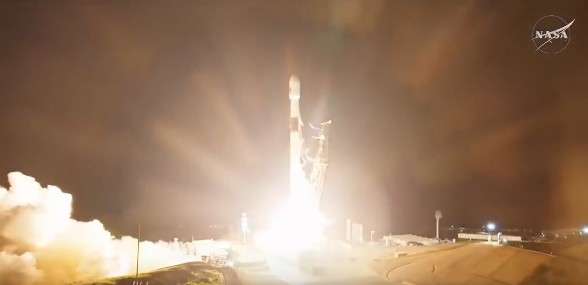
SpaceX launches NASA’s Sentinel-6B satellite to strengthen global sea-level monitoring
SpaceX successfully launched NASA’s Sentinel-6B satellite on Monday, marking a major advancement in global efforts to track sea-level rise and monitor changes across the world’s oceans. The mission, a partnership between NASA and several U.S. and European agencies, builds on more than three decades of continuous sea-level observations that help scientists understand climate change with precision.
The satellite lifted off at 12:21 a.m. ET (10:55 a.m. IST) from the Vandenberg Space Force Base in California aboard a Falcon 9 rocket. “Liftoff!” NASA announced on X, celebrating the deployment of the latest satellite in a long-running mission dedicated to measuring sea-level changes across the planet.
Sentinel-6B is the second in the program, following the successful launch of the Sentinel-6 Michael Freilich satellite in November 2020. Together, the two satellites will provide high-resolution data on sea-level rise, monitor ocean currents, and improve predictions of wind and wave conditions. SpaceX noted that the twin satellites will significantly enhance both short-term and long-term global weather forecasting.
Covering nearly 90 per cent of Earth’s oceans, Sentinel-6B will deliver vital climate and oceanographic information that will directly benefit coastal communities, governments, and researchers. As sea levels continue to rise due to global warming, the data will help improve urban planning, coastal resilience strategies, disaster preparedness, and infrastructure protection.
NASA said the satellite’s observations will aid city planners and state agencies in making informed decisions about protecting critical real estate, ports, energy facilities, and other coastal systems vulnerable to flooding and storm surges. Improved sea-level data will also support meteorologists in forecasting hurricanes and extreme weather events, helping emergency response teams better prepare for potential intensification.
The mission carries national security significance as well. Sentinel-6B’s information will assist defense planners in safeguarding coastal military bases from nuisance flooding, storm damage, and other climate-driven threats. The satellite’s insights into ocean conditions also support navigational safety for both commercial and defense operations.
Beyond Earth science, the data from Sentinel-6B will inform the Artemis human spaceflight program. NASA said improved modeling of atmospheric reentry will help ensure safer landings for astronauts returning from upcoming lunar missions.
With the successful launch of Sentinel-6B, global ocean monitoring enters a new era of precision, offering governments, scientists, and communities the tools needed to navigate a rapidly changing climate.